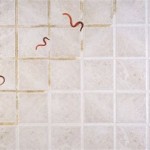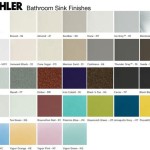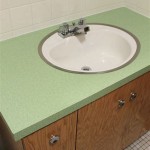Small Black Specks in the Bathroom: Identifying the Cause and Implementing Solutions
Discovering small black specks in the bathroom can be unsettling. These specks can vary in size, shape, and texture, making it challenging to determine their origin. Understanding the potential causes is crucial for implementing effective cleaning and preventative measures.
One common culprit is mold. Mold thrives in warm, damp environments, making bathrooms ideal breeding grounds. Black mold, specifically, often appears as small, dark specks. These specks can be found on various surfaces, including grout, caulk, ceilings, and shower curtains. Ignoring mold can lead to health problems, particularly for individuals with respiratory issues or allergies.
Mildew, a surface fungus related to mold, can also manifest as small black specks. While mildew typically presents as a flat, powdery growth, it can sometimes appear as scattered specks. Like mold, mildew thrives in humid conditions. It commonly grows on shower curtains, bath mats, and other porous surfaces.
Household dust can sometimes appear as accumulations of small black specks, particularly when combined with other airborne particles. These particles can include lint, hair, and dead skin cells. While not inherently harmful, excessive dust can trigger allergies and exacerbate respiratory conditions.
Sewage flies, also known as drain flies or moth flies, are small, dark-colored insects often found in bathrooms. Their larvae feed on organic matter in drains, and their presence can indicate a plumbing issue. While not directly the cause of the black specks, their excrement can appear as tiny, dark spots.
Another potential source of small black specks is flaking paint or rust particles. Over time, paint on bathroom walls and ceilings can deteriorate, resulting in small, dark flakes. Similarly, rust from metal fixtures can also contribute to the presence of black specks.
Identifying the source of the black specks requires careful observation and sometimes, testing. If mold is suspected, a mold testing kit can confirm its presence and identify the specific type. For insect infestations, examining drains and surrounding areas for signs of activity, such as larvae or adult insects, can confirm the source.
Once the source of the black specks has been identified, appropriate cleaning and preventative measures can be implemented. For mold and mildew, cleaning the affected areas with a bleach solution or a commercially available mold and mildew remover can effectively eliminate the problem. Ensuring adequate ventilation by using exhaust fans and keeping the bathroom dry can prevent future growth.
Addressing dust accumulation requires regular cleaning. Vacuuming or sweeping floors and wiping down surfaces with a damp cloth can help remove dust particles. Using a HEPA filter vacuum can be particularly effective in trapping small particles.
If sewage flies are the source, cleaning the affected drains with a drain cleaner or a mixture of baking soda and vinegar can eliminate the organic matter they feed on. Repairing any leaks or plumbing issues can also prevent future infestations.
Dealing with flaking paint involves scraping off the loose paint and repainting the affected area. Using a rust-inhibiting primer can prevent future rust formation. For rust on metal fixtures, using a rust remover and applying a protective coating can address the issue.
Regular cleaning and maintenance are crucial for preventing the recurrence of black specks in the bathroom. This includes regularly cleaning surfaces, ensuring adequate ventilation, and addressing any plumbing issues promptly. Implementing these practices can help maintain a clean and healthy bathroom environment.
Beyond regular cleaning, preventative measures play a vital role in maintaining a speck-free bathroom. Using a shower squeegee after each use can significantly reduce moisture buildup, discouraging mold and mildew growth. Regularly inspecting and cleaning drains can prevent sewage fly infestations. Promptly addressing any leaks or water damage can also help prevent the development of mold and mildew.
In addition to these measures, considering the materials used in the bathroom can also contribute to a cleaner environment. Opting for mold-resistant paint and caulk can help prevent mold growth. Choosing materials that are easy to clean and maintain can also simplify the cleaning process and reduce the likelihood of speck accumulation.
Maintaining a clean and healthy bathroom requires diligence and attention to detail. By understanding the potential causes of small black specks and implementing appropriate cleaning and preventative measures, homeowners can effectively address this issue and ensure a hygienic bathroom environment.

Terrifying Truth Behind Tiny Black Dots That Pop Up On Your Ceiling And Kitchen Tiles Daily Mail

Terrifying Truth Behind Tiny Black Dots That Pop Up On Your Ceiling And Kitchen Tiles Daily Mail

Re Appearing Black Spots Interior Inspections Internachi Forum

Cleaning Fan Asks What The Black Dots Which Have Mysteriously Appeared In Her Kitchen Are Is Horrified By Answer Sun

Black Spots On The Bathroom Ceiling Flood Water Damage Honolulu Oahu Hawaii Md Restoration

Identify Tiny Bugs In Bathroom And Get Rid Of Them For Good

Blacks Specks Or Flecks Floating In Bathtub

Re Appearing Black Spots Interior Inspections Internachi Forum

Ceiling Mold Growth Learn The Cause And How To Prevent It Environix

Why Is There Black Mold On My Bathroom Ceiling Medics
Related Posts







